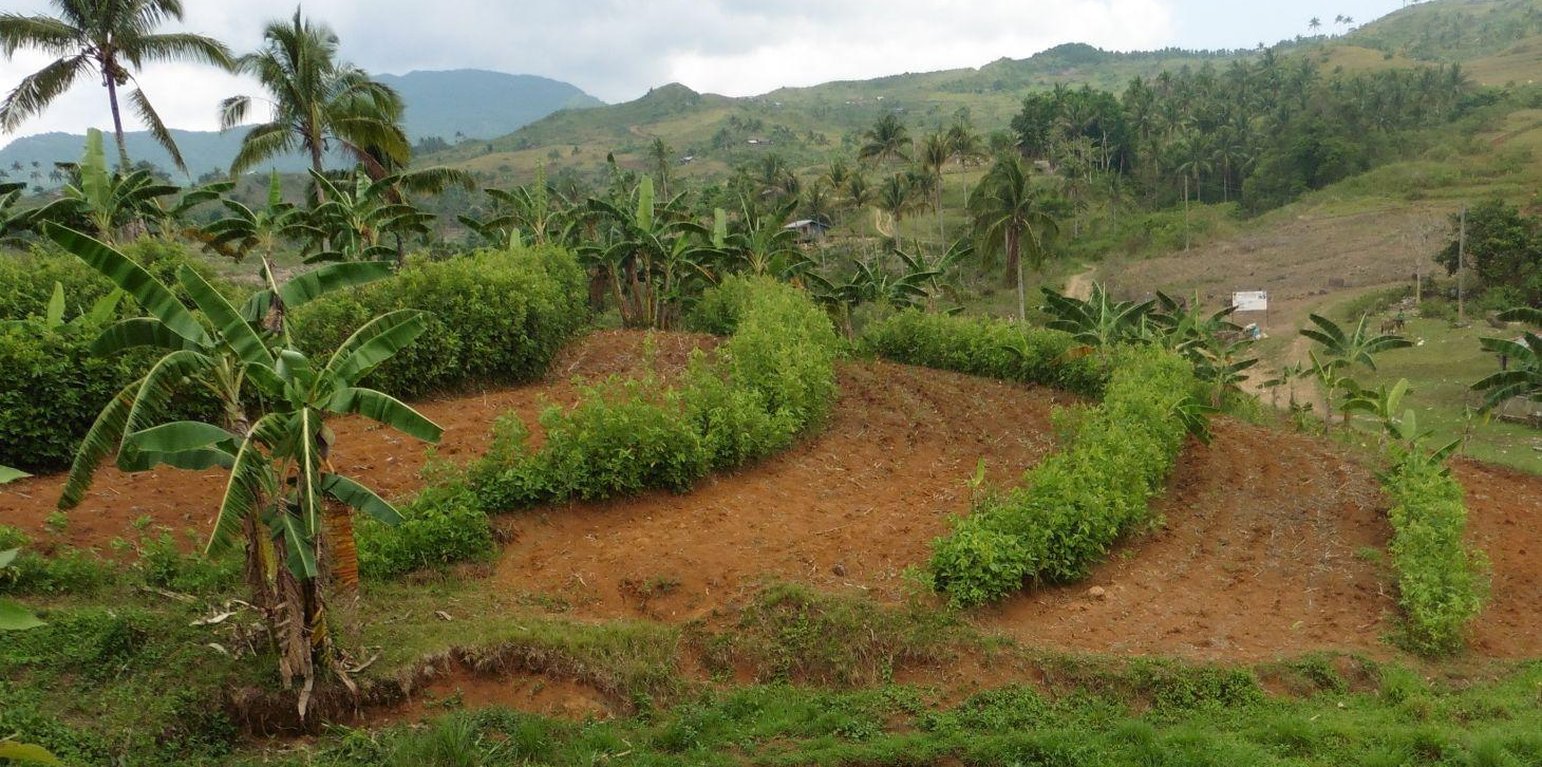Conservation Farming Village
(ຟີລິປິນ)
ຄຳອະທິບາຍ
A modality in mobilizing resources for sustainable upland development which utilizes a basket of strategies, technologies, and interventions to catalyze the widespread transformation of traditional upland farming systems into resilient and sustainable upland production systems.
The objectives of Conservation Farming Village (CFV) are the following: to enhance farmers' adoption of sloping land management technologies through Science and Technology-based farming; to capacitate key groups and stakeholders in the community to better manage fragile upland resources; to conduct sustainability exercises to ensure sustainability of upland community development; to establish linkages among research-extension agencies and organizations for capacity building; and to provide support systems for the conservation farming communities.
The methods involved in the approach include capacitating upland farmers for sustainable development; strong Local Government Unit (LGU) support system; and establishing collaborative linkages and partnership as a tool for an enhanced support system.
The project of CFV in La Libertad, Negros Oriental was initiated in 2009. The first stage in the implementation of the approach is program orientation followed by community profiling. Then, Community Organizing or People's Organization strengthening. After that, technical trainings, barangay development council and municipal development council meetings were conducted to capacitate the farmers. Farm establishment was done through 'bayanihan' or group volunteerism, and lastly, farmers were encouraged to participate in the CFV.
The National Program Coordinating Office, Philippine Council for Agriculture, Aquatic and Natural Resources Research and Development (PCAARRD) and academic institutions (University of the Philippines Los Baños, Silliman University) provided technical support in the conceptualization and implementation of CFV. The LGU of La Libertad conducted the following : (1) capacity building for farmer volunteers and adopters; (2) assist in the establishment of science and technology-based conservation model farms; (3) incorporate CFV activities in the LGU Annual Investment Plan; and (4) provision of livelihood and support mechanisms to farmers.The implementation of the CFV project became a focal point of convergence of relevant and related activities being undertaken in the upland communities of La Libertad by Non-Government Organizations (NGOs), Government Offices (GOs) and other institutions.Through this approach, the farmers have made linkage with other service providers that enhanced the farmers' access to examine other technology options, livelihood opportunities, credit and financing source, and others that may help the farmers.
ສະຖານທີ່
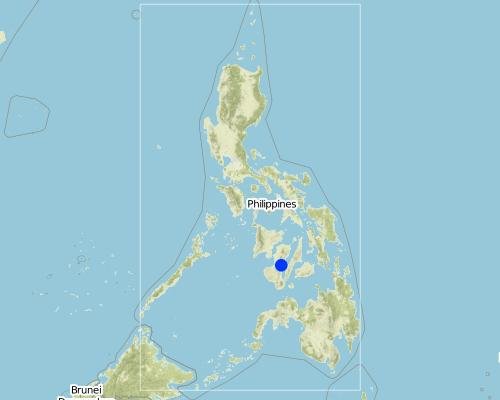
ສະຖານທີ່: La Libertad, Negros Oriental, ຟີລິປິນ
ການຄັດເລືອກພື້ນທີ່ ທີ່ອີງໃສ່ຂໍ້ມູນທາງພູມີສາດ
ວັນທີເລີ່ມຕົ້ນ: 2009
ປີຂອງການສິ້ນສຸດ: n.a.
ປະເພດຂອງແນວທາງ
-
ພື້ນເມືອງ / ທ້ອງຖີ່ນ
-
ການລິເລີ່ມ ພາຍໃນປະເທດ ທີ່ຜ່ານມາ / ນະວັດຕະກໍາ
-
ພາຍໃຕ້ໂຄງການ / ແຜນງານ
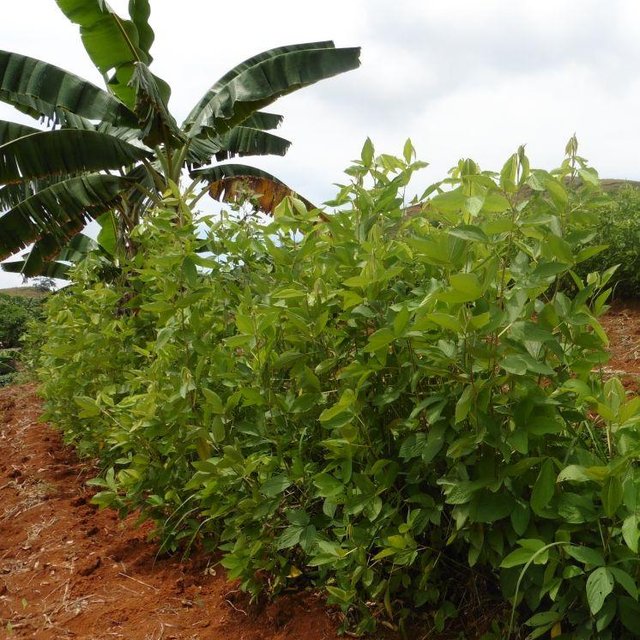
Flemengia and banana planted as hedgerows. (Engr. Djolly Ma. P. Dinamling, Bureau of Soils and Water Management)
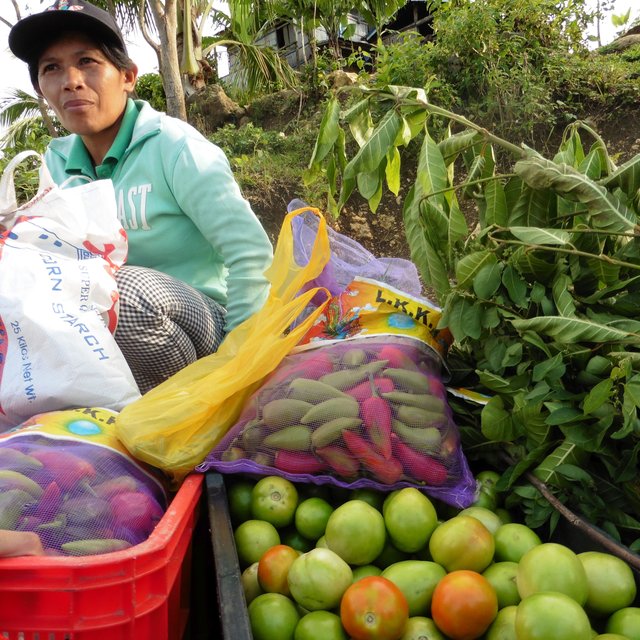
An upland farmer of CFV delivering the harvested crops in the market (Engr. Djolly Ma. P. Dinamling (Bureau of Soils and Water Management))
ເປົ້າໝາຍຂອງແນວທາງ ແລະ ການປົກປັກຮັກສາສິ່ງແວດລ້ອມ
ເປົ້າໝາຍ / ຈຸດປະສົງຫຼັກໃນການຈັດຕັ້ງປະຕິບັດແນວທາງ
The CFV addresses the development, application, and validation of integrated farming systems in which holistic technology transfer and emphasis on sustainable development dimensions - environmental, economic, social - are the major driving forces for economic and environmental security.
ເງື່ອນໄຂທີ່ສະໜັບສະໜູນໃຫ້ການຈັດຕັ້ງປະຕິບັດເຕັກໂນໂລຢີ ບົນພື້ນຖານແນວທາງ
-
ສັງຄົມ / ວັດທະນະທໍາ / ມາດຕະຖານ ແລະ ຄຸນຄ່າທາງສາສະໜາ: Selection of farmer volunteers to be included in the CFV program and establishment of model farms. Government executives were invited to participate in farmers' field day in remote upland villages to show to the farmers their intention to support the program.
-
ມີຄວາມສາມາດ / ເຂັ້າເຖິງຊັບພະຍາກອນດ້ານການເງິນ ແລະ ການບໍລິການ: Incorporation of the CFV program in the Annual Investment Plan (AIP) of the LGU of La Libertad, Negros Oriental
-
ການກໍ່ຕັ້ງສະຖາບັນ: Farmers' organizations were organized and strengthened by mobilizing the 'Dagyaw Team' or Volunteers Group for the establishment of CFV model farms.
-
ຄວາມຮູ້ກ່ຽວກັບການຄຸ້ມຄອງ ທີ່ດິນແບບຍືນຍົງ, ການເຂົ້າເຖິງການສະໜັບສະໜູນ ທາງດ້ານວິຊາການ: Provided series of technical training on the concepts and practices in CFV to the Barangay Development Councils (BDCs), Farmer Association, Municipal Development Councils (MDCs) and other stakeholders to enhance awareness on land degradation in the uplands and other environmental issues.
ເງື່ອນໄຂທີ່ເຊື່ອງຊ້ອນໃຫ້ການຈັດຕັ້ງປະຕິບັດເຕັກໂນໂລຢີ ບົນພື້ນຖານແນວທາງ
ການມີສ່ວນຮ່ວມ ແລະ ບົດບາດຂອງພາກສ່ວນທີ່ກ່ຽວຂ້ອງທີ່ມີສ່ວນຮ່ວມ
ພາລະບົດບາດຂອງພາກສ່ວນທີ່ກ່ຽວຂ້ອງ ທີ່ມີສ່ວນຮ່ວມໃນການຈັດຕັ້ງປະຕິບັດແນວທາງ
| ແມ່ນໃຜ / ພາກສ່ວນໃດ ທີ່ເປັນເຈົ້າການ ໃນການຈັດຕັ້ງປະຕິບັດ ວິທີການ? |
ລະບຸ ພາກສ່ວນທີ່ກ່ຽວຂ້ອງ |
ພັນລະນາ ບົດບາດ ໜ້າທີ່ ຂອງພາກສ່ວນທີ່ກ່ຽວຂ້ອງ |
| ຜູ້ນໍາໃຊ້ດິນໃນທ້ອງຖິ່ນ / ຊຸມຊົນທ້ອງຖິ່ນ |
Land user from the upland barangay |
|
| ຜູ້ຊ່ຽວຊານ ການນຄຸ້ມຄອງ ທີ່ດິນແບບຍືນຍົງ / ທີ່ປຶກສາດ້ານກະສິກໍາ |
LGU of La Libertad |
|
ອົງການທີ່ເປັນຕົວແທນໃນການຈັດຕັ້ງປະຕິບັດ
Local land users
ການລວບລວມເອົາຜູ້ນໍາໃຊ້ທີ່ດິນໃນທ້ອງຖິ່ນ/ຊຸມຊົນທ້ອງຖິ່ນ ໃນການຈັດຕັ້ງປະຕິບັດແນວທາງ ແຕ່ລະໄລຍະ
ບໍ່ມີ
ການບໍ່ປະຕິບັດ
ການຊ່ວຍເຫຼືອຈາກພາຍນອກ
ການຮ່ວມມື
ການນໍາໃໍຊ້ເອງ
ການເລີ່ມຕົ້ນ / ແຮງຈູງໃຈ
Ten model farms were selected from CFV barangays.
ການວາງແຜນ
Participation in meetings, sharing inputs.
ການປະຕິບັດ
Model farm establishment and maintenance, Farmer volunteers serve as local extension agents to fellow farmers.
ຕິດຕາມກວດກາ / ການປະເມີນຜົນ
Participation in consultation meetings, farm record keeping.
ແຜ່ນວາດສະແດງ
Organizational structure in the implementation of CFV
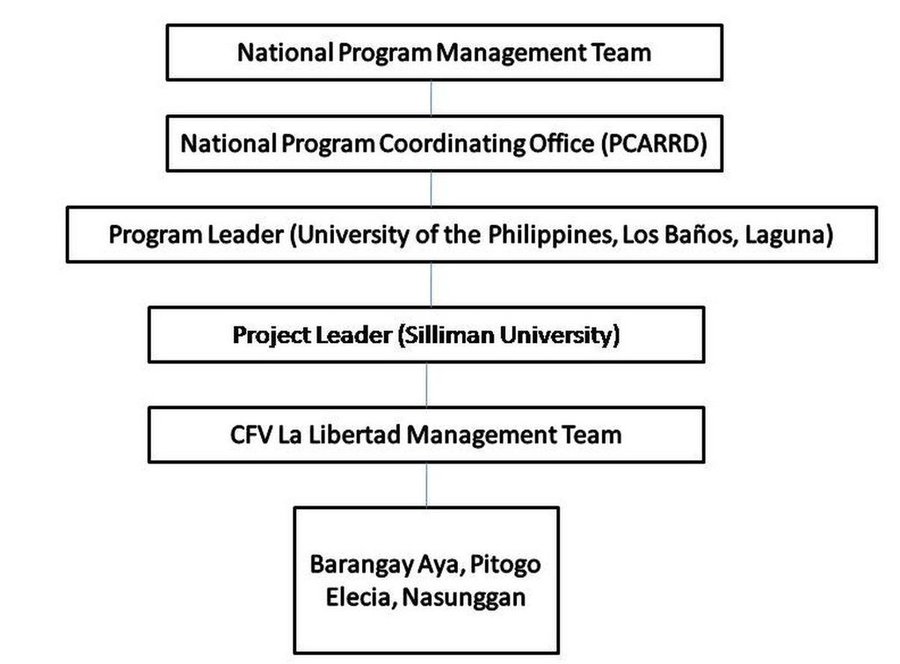
ຜູ້ຂຽນ: Dr. Rex Victor O. Cruz, University of the Philippines, Los Baños
ການຕັດສິນໃຈໃນການເລືອກເຕັກໂນໂລຢີ ການຄຸ້ມຄອງທີ່ດິນແບບຍືນຍົງ
ການຕັດສິນໃຈໂດຍ
-
ຜູ້ນໍາໃຊ້ດິນຜູ້ດຽວ (ການລິເລີ່ມດ້ວຍຕົນເອງ)
-
ຜູ້ນໍາໃຊ້ທີ່ດິນຫຼັກ, ການສະໜັບສະໜູນ ໂດຍຜູ້ຊ່ຽວຊານ ການນໍາໃຊ້ທີ່ດິນແບບຍືນຍົງ
-
ພາກສ່ວນກ່ຽວຂ້ອງທັງໝົດ, ເປັນສ່ວນໜຶ່ງ ຂອງວິທີທາງແບບມີສ່ວນຮ່ວມ
-
ຜູ້ຊ່ຽວຊານ ຫຼັກດ້ານການຄຸ້ມຄອງ ທີ່ດິນແບບຍືນຍົງ, ມີການຕິດຕາມປຶກສາຫາລືກັບຜູ້ນໍາໃຊ້ທີ່ດິນ
-
ຊຽ່ວຊານ ສະເພາະດ້ານການຄຸ້ມຄອງ ດິນແບບຍືນຍົງຜູ້ດຽວ
-
ນັກການເມືອງ / ຜູ້ນໍາ
ການຕັດສິນໃຈບົນພື້ນຖານ
-
ປະເມີນເອກກະສານ ຄວາມຮູ້ກ່ຽວກັບ ການຄຸ້ມຄອງ ທີ່ດິນແບບຍືນຍົງ (ຫຼັກຖານທີ່ຊ່ວຍໃນການຕັດສິນໃຈ)
-
ຜົນທີ່ໄດ້ຮັບ ຈາກການຄົ້ນຄວ້າ
-
ປະສົບການສ່ວນບຸກຄົນ ແລະ ຄວາມຄິດເຫັນ (ທີ່ບໍ່ເປັນເອກກະສານ)
ການສະໜັບສະໜູນເຕັກໂນໂລຢີ, ການສ້າງຄວາມອາດສາມາດ ແລະ ການຄຸ້ມຄອງຄວາມຮູ້
ກິດຈະກຳ ດັ່ງລຸ່ມນີ້ ແມ່ນເປັນພາກໜຶ່ງຂອງແນວທາງ
-
ການສ້າງຄວາມສາມາດ / ການຝຶກອົບຮົມ
-
ການບໍລິການໃຫ້ຄໍາປຶກສາ
-
ສະຖາບັນການສ້າງຄວາມເຂັ້ມແຂງ (ການພັດທະນາອົງການຈັດຕັ້ງ)
-
ຕິດຕາມກວດກາ ແລະ ປະເມີນຜົນ
-
ການຄົ້ນຄວ້າ
ການສ້າງຄວາມອາດສາມາດ / ຝຶກອົບຮົມ
ໄດ້ສະໜັບສະໜູນຝຶກອົບຮົມໃຫ້ແກ່ພາກສ່ວນກ່ຽວຂ້ອງດັ່ງລຸ່ມນີ້
-
ຜູ້ນໍາໃຊ້ດິນ
-
ພະນັກງານພາກສະໜາມ / ທີ່ປຶກສາ
ຮູບແບບການຝຶກອົບຮົມ
-
ການເຮັດຕົວຈິງ
-
ຕົວຕໍ່ຕົວ
-
ເນື້ອທີ່ສວນທົດລອງ
-
ກອງປະຊຸມ
-
ຫຼັກສູດ
ກວມເອົາຫົວຂໍ້
Conservation Farming, Sloping Land Management, Agroforestry, Climate Change , Organic Farming/Fertilizer Production, measuring rainfall and soil erosion. Trainers' training were conducted to capacitate the implementer.
ຄວາມເຂັ້ມແຂງຂອງສະຖາບັນ
ສະຖາບັນ ໄດ້ຮັບການສ້າງຄວາມເຂັ້ມແຂງ
-
ບໍ່ມີ
-
ມີ, ໜ້ອຍໜຶ່ງ
-
ມີ, ພໍສົມຄວນ
-
ມີ, ຫຼາຍ
ໃນລະດັບດັ່ງລຸ່ມນີ້
-
ທ້ອງຖິ່ນ
-
ລະດັບພາກພື້ນ
-
ແຫ່ງຊາດ
ອະທິບາຍສະຖາບັນ, ພາລະບົດບາດແລະຄວາມຮັບຜິດຊອບ, ສະມາຊິກ, ແລະອື່ນໆ.
ຮູບແບບການສະໜັບສະໜູນ
-
ທາງດ້ານການເງິນ
-
ການສ້າງຄວາມອາດສາມາດ / ການຝຶກອົບຮົມ
-
ອຸປະກອນ
ລາຍລະອຽດເພີ່ມເຕີມ
ການຕິດຕາມ ແລະ ປະເມີນຜົນ
ການຄົ້ນຄວ້າ
ການວິໄຈໄດ້ຮັບການຮັກສາຫົວຂໍ້ຕໍ່ໄປນີ້
-
ສັງຄົມ
-
ເສດຖະສາດ / ການຕະຫຼາດ
-
ລະບົບນິເວດ
-
ເຕັກໂນໂລຢີ
Researches were conducted by PCAARRD and UPLB to evaluate the approach and technologies introduced in the area. Land users were also taught about climatic data collection such as rainfall and farm record keeping that could be used in evaluating the impacts.
ການສະໜັບສະໜູນທາງດ້ານການເງິນ ແລະ ອຸປະກອນຈາກພາຍນອກ
ງົບປະມານປະຈຳປີ ໃນກິດຈະກຳ ການຄຸ້ມຄອງທີ່ດິນແບບຍືນຍົງ ທີ່ເປັນສະກຸນເງິນໂດລາ
-
< 2,000
-
2,000-10,000
-
10,000-100,000
-
100,000-1,000,000
-
> 1,000,000
Precise annual budget: n.a.
PCAARRD and UPLB 30%, LGU of La Libertad 70%
ການບໍລິການ ຫຼື ສິ່ງກະຕຸກຊຸກຍູ້ ດັ່ງລຸ່ມນີ້ ແມ່ນໄດ້ສະໜອງໂດຍຜູ້ນຳໃຊ້ທີ່ດິນເອງ
-
ການສະໜັບສະໜູນ ທາງດ້ານການເງິນ / ອຸປະກອນ ສະໜອງໃຫ້ແກ່ຜູ້ນໍາທີ່ດິນ
-
ຫຼຸດປັດໃຈນໍາເຂົ້າ
-
ສິນເຊື່ອ
-
ສິ່ງຈູງໃຈ ຫຼື ເຄື່ອງມືອື່ນໆ
ເງິນສະໜັບສະໜູນອຸປະກອນ / ສະໜອງໃຫ້ຜູ້ຊົມໃຊ້ທີ່ດິນ
ງົບປະມານບາງສ່ວນ
ງົບປະມານເຕັມສ່ວນ
ອຸປະກອນ: ເຄື່ອງມື
shovel, mattock, sickle and bolo
ກະສິກໍາ: ແນວພັນ, ແກ່ນພັນ
vegetable & forage seeds, coffee & cacao seedlings
ແຮງງານຂອງຜູ້ນໍ້າໃຊ້ທີ່ດິນ
-
ການອາສາ
-
ລ້ຽງເຂົ້າ - ອາຫານ
-
ຈ່າຍເປັນເງິນສົດ
-
ໄດ້ຮັບການສະໜັບສະໜູນ ອຸປະກອນດ້ານອື່ນ
ການວິເຄາະຜົນກະທົບ ແລະ ສະຫຼຸບລວມ
ຜົນກະທົບຂອງການນໍາໃຊ້ແນວທາງ
ບໍ່
ມີ, ໜ້ອຍໜຶ່ງ
ມີ, ພໍສົມຄວນ
ມີ, ຫຼາຍ
ການຈັດຕັ້ງປະຕິບັດ ວິທີທາງ ສາມາດຊ່ວຍຜູ້ນໍາໃຊ້ທີ່ດິນ ໃນການຈັດຕັ້ງປະຕິບັດ ແລະ ບໍາລຸງຮັກສາ ເຕັກໂນໂລຢີ ການຄຸ້ມຄອງ ທີ່ດິນແບບຍືນຍົງໄດ້ບໍ?
Soil and water conservation measures were introduced to the land users such as contour hedgerows of legumes that contribute in improving the quality of the soil and lessen soil erosion.
ການຈັດຕັ້ງປະຕິບັດ ວິທີທາງ ສາມາດສ້າງຄວາມເຂັ້ມແຂງ ທາງສັງຄົມ ແລະ ເສດຖະກິດບໍ່?
The approach involved the upland farmers in the establishment of science and technology based farms. 80-90% of the farmer-volunteers and adaptors perceived that CFV led to an increase in their crop and farm yield resulting in increased income.
ການຈັດຕັ້ງປະຕິບັດ ວິທີທາງ ສາມາດປັບປຸງ ປະເດັນການຖືຄອງທີ່ດິນ / ສິດທິໃນການນໍາໃຊ້ທີ່ດິນ ທີ່ເຊື່ອງຊ້ອນໃນການຈັດຕັ້ງປະຕິບັດ ເຕັກໂນໂລຢີ ການຄຸ້ມຄອງ ທີ່ດິນແບບຍືນຍົງໄດ້ບໍ?
ການນໍາໃຊ້ ວິທີທາງ ໄດ້ປັບປຸງ ການຄໍ້າປະກັນສະບຽງອາຫານ ຫຼື ປັບປຸງໂຄສະນາການໄດ້ບໍ່?
Increase in per capita income of CFV farmer-volunteers from Php 7,973.00 in 2004 to Php 16,745.42 in 2013, representing 47.6% increase.
Did other land users / projects adopt the Approach?
Eight barangays with fifteen model farms adopted the CFV approach in La Libertad, Negros Oriental. The program was also replicated by other neighboring municipality.
ສິ່ງກະຕຸກຊຸກຍູ້ໃຫ້ຜູ້ນໍາໃຊ້ທີ່ດິນ ໃນການປະຕິບັດການຄຸ້ມຄອງທີ່ດິນແບບຍືນຍົງ
-
ການຜະລິດເພີ່ມຂຶ້ນ
-
ກໍາໄລເພີ່ມຂຶ້ນ (ຄວາມສາມາດ), ການປັບປຸງຄ່າໃຊ້ຈ່າຍ, ຜົນປະໂຫຍດ, ອັດຕາສ່ວນ
-
ຫຼຸດຜ່ອນດິນເຊື່ອມໂຊມ
-
ຫຼຸດຜ່ອນຄວາມສ່ຽງຂອງໄພພິບັດ
-
ການຫຼຸດຜ່ອນພາລະວຽກ
-
ການຊໍາລະເງິນ / ເງິນອຸດໜູນ
-
ກົດລະບຽບແລະລະບຽບການ (ລະອຽດ) / ການບັງຄັບໃຊ້
-
ກຽດສັກສີ, ຄວາມກົດດັນທາງສັງຄົມ / ການຕິດຕໍ່ກັນທາງສັງຄົມ
-
ລວມເຂົ້ານໍາກັນກັບການເຄື່ອນໄຫວ / ໂຄງການ / ກຸ່ມ / ເຄືອຂ່າຍ
-
ຄວາມຮັບຮູ້ ທາງສີ່ງແວດລ້ອມ
-
ພາສີ ແລະ ຄວາມເຊື່ອຖື, ສົມບັດສິນທໍາ
-
ການປັບປຸງ ຄວາມຮູ້ ແລະ ຄວາມສາມາດ ຂອງການຄຸ້ມຄອງ ທີ່ດິນແບບຍືນຍົງ
-
ການປັບປຸງຄວາມງົດງາມ
-
ການຫຼຸດຜ່ອນຂໍ້ຂັດແຍ່ງ
-
Trainings and study tours (Lakbay-Aral)
ຄວາມຍືນຍົງຂອງການຈັດຕັ້ງປະຕິບັດກິດຈະກໍາຂອງແນວທາງ
ຜູ້ນໍາໃຊ້ທີ່ດິນ ສາມາດຈັດຕັ້ງປະຕິບັດຕາມແນວທາງໄດ້ເອງບໍ່ (ໂດຍປາດສະຈາກການສະໜັບສະໜູນຈາກພາກສ່ວນພາຍນອກ)?
The land users were capacitated by the LGU through trainings, cross visits so that they can manage their farms and to share the knowledge with neighboring farmers.
ບົດສະຫຼຸບ ແລະ ບົດຮຽນທີ່ໄດ້ຮັບ
ຄວາມເຂັ້ມແຂງ: ທັດສະນະມູມມອງ ຂອງຜູ້ນໍາໃຊ້ທີ່ດິນ
-
Marketing support system with the establishment of barangay trading post in the CFV sites,support for the operations of the two livestock auction markets at two barangays, transport of farm products from CFV sites to Poblacion in time for the market day every Thursday and linkage with OURFOOD Program (AFOS) based in Cebu City for the marketing of organically-grown high value crops.
ຄວາມເຂັ້ມແຂງ: ທັດສະນະມຸມມອງ ຂອງຜູ້ປ້ອນຂໍ້ມູນເອງ
-
Strong LGU support wherein they are the forefront for the present and the future of the CFV programs or any development program.They are the only permanent local institution that could deliver services and support to development initiatives.
ຈຸດອ່ອນ / ຂໍ້ເສຍ / ຄວາມສ່ຽງ: ທັດສະນະມູມມອງ ຂອງຜູ້ນໍາໃຊ້ທີ່ດິນວິທີການແກ້ໄຂແນວໃດ
ຈຸດອ່ອນ / ຂໍ້ເສຍ / ຄວາມສ່ຽງ: ທັດສະນະມຸມມອງ ຂອງຜູ້ປ້ອນຂໍ້ມູນເອງວິທີການແກ້ໄຂແນວໃດ
-
No clear zoning and proper delineation for the CFV and reforestation areas.
There should be a clear zoning through policy and ordinance by the national and local government to sustain and preserve the CFV sites.
ເອກກະສານອ້າງອີງ
ການລວບລວມ
-
Philippine Overview of Conservation Approaches and Technologies
ວັນທີຂອງການປະຕິບັດ: March 20, 2017
ປັບປຸງລ່າສຸດ: April 5, 2017
ບຸກຄົນທີ່ສໍາຄັນ
-
Philippine Overview of Conservation Approaches and Technologies (philcatsecretariat@gmail.com) - ຜູ້ຊ່ຽວຊານ ດ້ານການຄຸ້ມຄອງ ທີ່ດິນແບບຍືນຍົງ
-
Dr. Rex Victor O. Cruz (rexcruz@yahoo.com) - ຜູ້ຊ່ຽວຊານ ດ້ານການຄຸ້ມຄອງ ທີ່ດິນແບບຍືນຍົງ
ການບັນຍາຍລາຍລະອຽດ ໃນຖານຂໍ້ມູນ ຂອງ WOCAT
ຂໍ້ມູນການເຊື່ອມໂຍງຂໍ້ມູນການຄຸ້ມຄອງການນໍາໃຊ້ດິນແບບຍືນຍົງ
ເອກກະສານ ແມ່ນໄດ້ອໍານວຍຄວາມສະດວກໂດຍ
ສະຖາບັນ
- Department of Agriculture-Region VIII (DA-8) - ຟີລິປິນ
- Farming Systems and Soil Resources Institute, University of the Philippines Los (Farming Systems and Soil Resources Institute, University of the Philippines Los) - ຟີລິປິນ
- Municipality of La Libertad, Negros Oriental, Philippines (Municipality of La Libertad) - ຟີລິປິນ
- Silliman University, Dumaguete, Philippines (Silliman University) - ຟີລິປິນ
ໂຄງການ
- Decision Support for Mainstreaming and Scaling out Sustainable Land Management (GEF-FAO / DS-SLM)
